Perhaps the greatest long-term challenge facing agriculture globally, and not just in Ireland, will be the sector’s response to tackling climate change. In Ireland, agriculture accounts for over 30% of the country’s greenhouse gas(GHG) emissions, which is high compared with other developed economies, reflecting the lack of heavy industry in this country.
In a 2013 report titled Carbon neutrality as a horizon point for Irish agriculture, researchers at Teagasc projected that GHG emissions from Irish agriculture will rise to 22m tonnes of CO2 equivalent by 2030 in the absence of any measures to abate emissions.
Carbon sequestration
On top of this, the Teagasc report forecasts that the major carbon sinks in Ireland, such as grasslands and forestry, have the potential to sequester just over 9m tonnes of CO2 equivalent by 2030. This means the emissions gap (the difference between gross agricultural emissions and agricultural offsetting) will be 13m tonnes of CO2 equivalent by 2030, or 66% of total agricultural emissions.
Even worse, the report projects that by 2050 the emissions gap from Irish agriculture will continue to widen to between 16m and 17m tonnes of CO2 equivalent, or 75% of total agricultural emissions.
However, new research by the team at agri-technology group Devenish on the company’s research farm at Dowth, Co Meath, is aiming to achieve carbon neutrality on a suckler beef farm, which would be a world first and significant for the future of beef production in Ireland.
Led by Dr John Gilliland OBE, a former president of the Ulster Farmers’ Union, chair of the UK’s Rural Climate Change Forum and now director of agriculture and sustainability at Devenish, the team at the Lands at Dowth have been using the latest technologies available to measure and map the farm at Dowth (from soil health to grass growth to nutrient application and even soil carbon) since 2014.
Set on 170ha of grass and natural woodlands, the Devenish lands at Dowth are currently home to a herd of suckler cows and calves. Starting in February 2014, Dr Gilliland and his team set about establishing a baseline for the soil health of the farm.
What they found was that the soil health of the farm was in poor condition after many years of neglect, with the soil pH level from a brown earth soil in very poor shape at 5.5. However, this initial set of precision GPS soil testing was to set the baseline for the farm, allowing the Devenish team to measure and manage and measure again, repeating this initial process every two years.

Improvements in soil pH on the farm. \ Devenish
Fertility
Since 2014, and following four years of soil management, the team at Devenish has been able to restore fertility in the soil at Dowth through a carefully managed programme of nutrient application (slurry and chemical). As of February 2018, the soil pH at Dowth has improved to an average of 6.1, which is entering the sweet spot in terms of maximising fertiliser utilisation in the soil (see below).
It is expected that the improved soil fertility at Dowth will now allow grass utilisation on the farm to double to 10t dry matter (DM)/ha/year over the next five years.
However, aside from the focus on improving soil fertility at Dowth, Dr Gilliland and his team have been working on an exciting project to measure and manage the carbon footprint of the farm.
The team has created a vision to make the farm and landscape at Dowth carbon-neutral and have recently completed the world’s first carbon balance sheet on the farm.
Baseline
To start, the team created a baseline for the carbon levels on the farm in 2017 by digging 88 soil pits located in every part of the farm to sample the soil to 30cm (see below). The work found that the average carbon stored in the soils at Dowth was 2.1%.
It also found that the greatest amounts of carbon were stored in soils that were part of the floodplains on the farm at an average of just over 158t of carbon/ha. Woodland areas of the farm stored an average of just under 71t of carbon/ha, while soil carbon in the grazing lands was found to average just under 58t of carbon/ha.
Based on this, the Devenish team concluded the total carbon stored in the soils at Dowth to be just over 9,100t. On top of this, the team made a conservative calculation that the lands could sequester an additional 128t of carbon per year.
Not happy to stop there, the team at Dowth began using a surveying technology called LiDAR to measure the amount of carbon stored above ground in trees and hedgerows. LiDAR was originally developed by the US military to aid them during jungle warfare to digitally map below the dense jungle canopies of Vietnam. The Devenish team has simply recalibrated the technology to map carbon in the trees and hedges on the farm.
The LiDAR technology revealed the total amount of carbon stored in the hedges and trees at Dowth to be just under 3,900t. The amount of carbon sequestered by the trees and hedges every year at Dowth is calculated at 54t.
This means that between the land, trees and hedgerows at Dowth farm, just under 182t of carbon are sequestered from the atmosphere every year, which equates to CO2 equivalent of 665t per annum (see Dowth carbon balance sheet below).
From this baseline, Dr Gilliland and his team have calculated that the sequestration on Dowth farm, based on a stocking rate of two livestock units (LU)/ha, is able to displace 56% of all GHGs emitted by the suckler herd on the farm. At a lower stocking rate of 1.2 LU/ha, carbon neutrality is achieved on the farm.
Production agriculture
However, the team at Devenish is focused on production agriculture and believes carbon neutrality on the farm can be achieved at a stocking rate of 2LU/ha. According to Dr Gilliland, the focus has now shifted to achieving carbon neutrality, with a number of initiatives under way.
One method to increase the volume of carbon sequestered by the farm is to explore the potential of agroforestry.
Research shows that planting 200 poplar trees/ha in a silvopasture system will almost treble the annual sequestration of carbon on the farm on a per-hectare basis, while work carried out at AFBI in Co Armagh has shown the potential of extending soil trafficability by up to 17 weeks, creating a massive opportunity to help farmers extend their grazing season.
Grazing season
The grazing season is extended in a silvopasture system as the trees suck up large quantities of moisture from the ground, allowing livestock to travel on the land during periods of the season that have traditionally been too wet to let cattle out.
Over the coming years, Dr Gilliland and his team will continue to measure and manage and measure again at Dowth farm with the aim of producing a carbon-neutral balance sheet for Dowth every year.
With the baseline carbon measurement now in place, the team can work on achieving carbon neutrality on a production-focused suckler beef farm – something we thought was not possible.
For the wider agriculture sector in Ireland, the developments are Dowth are very exciting and offer a glimpse into a future where agriculture can proactively tackle climate change and GHG emissions.
Devenish executive director Owen Brennan told the Irish Farmers Journal that the research at Dowth is part of the company’s “one health” approach, which aims at “healthy plants, animals, people and environment delivered at the same time”.
“It would be much more impactful if we took the science to the landscape,” he said. “We do everything to publishable scientific standards, but also in pilot projects so that translatable and applied to the field.”
The work being pioneered by Dr Gilliland and his team has not gone unnoticed. Dowth farm has recently been selected by Wageningen University in the Netherlands as one of four international “Lighthouse Farms”.
According to Wageningen University, the Lighthouse Farm project is a network of farming systems that are customised for contrasting environments, climates, farmers and cultures, initially located in Brazil, Finland, Indonesia and Ireland. Dowth has undoubtedly done this and led the development of this network given the investment in science and research to bring alive again this sensitive and historic landscape.
Perhaps the greatest long-term challenge facing agriculture globally, and not just in Ireland, will be the sector’s response to tackling climate change. In Ireland, agriculture accounts for over 30% of the country’s greenhouse gas(GHG) emissions, which is high compared with other developed economies, reflecting the lack of heavy industry in this country.
In a 2013 report titled Carbon neutrality as a horizon point for Irish agriculture, researchers at Teagasc projected that GHG emissions from Irish agriculture will rise to 22m tonnes of CO2 equivalent by 2030 in the absence of any measures to abate emissions.
Carbon sequestration
On top of this, the Teagasc report forecasts that the major carbon sinks in Ireland, such as grasslands and forestry, have the potential to sequester just over 9m tonnes of CO2 equivalent by 2030. This means the emissions gap (the difference between gross agricultural emissions and agricultural offsetting) will be 13m tonnes of CO2 equivalent by 2030, or 66% of total agricultural emissions.
Even worse, the report projects that by 2050 the emissions gap from Irish agriculture will continue to widen to between 16m and 17m tonnes of CO2 equivalent, or 75% of total agricultural emissions.
However, new research by the team at agri-technology group Devenish on the company’s research farm at Dowth, Co Meath, is aiming to achieve carbon neutrality on a suckler beef farm, which would be a world first and significant for the future of beef production in Ireland.
Led by Dr John Gilliland OBE, a former president of the Ulster Farmers’ Union, chair of the UK’s Rural Climate Change Forum and now director of agriculture and sustainability at Devenish, the team at the Lands at Dowth have been using the latest technologies available to measure and map the farm at Dowth (from soil health to grass growth to nutrient application and even soil carbon) since 2014.
Set on 170ha of grass and natural woodlands, the Devenish lands at Dowth are currently home to a herd of suckler cows and calves. Starting in February 2014, Dr Gilliland and his team set about establishing a baseline for the soil health of the farm.
What they found was that the soil health of the farm was in poor condition after many years of neglect, with the soil pH level from a brown earth soil in very poor shape at 5.5. However, this initial set of precision GPS soil testing was to set the baseline for the farm, allowing the Devenish team to measure and manage and measure again, repeating this initial process every two years.

Improvements in soil pH on the farm. \ Devenish
Fertility
Since 2014, and following four years of soil management, the team at Devenish has been able to restore fertility in the soil at Dowth through a carefully managed programme of nutrient application (slurry and chemical). As of February 2018, the soil pH at Dowth has improved to an average of 6.1, which is entering the sweet spot in terms of maximising fertiliser utilisation in the soil (see below).
It is expected that the improved soil fertility at Dowth will now allow grass utilisation on the farm to double to 10t dry matter (DM)/ha/year over the next five years.
However, aside from the focus on improving soil fertility at Dowth, Dr Gilliland and his team have been working on an exciting project to measure and manage the carbon footprint of the farm.
The team has created a vision to make the farm and landscape at Dowth carbon-neutral and have recently completed the world’s first carbon balance sheet on the farm.
Baseline
To start, the team created a baseline for the carbon levels on the farm in 2017 by digging 88 soil pits located in every part of the farm to sample the soil to 30cm (see below). The work found that the average carbon stored in the soils at Dowth was 2.1%.
It also found that the greatest amounts of carbon were stored in soils that were part of the floodplains on the farm at an average of just over 158t of carbon/ha. Woodland areas of the farm stored an average of just under 71t of carbon/ha, while soil carbon in the grazing lands was found to average just under 58t of carbon/ha.
Based on this, the Devenish team concluded the total carbon stored in the soils at Dowth to be just over 9,100t. On top of this, the team made a conservative calculation that the lands could sequester an additional 128t of carbon per year.
Not happy to stop there, the team at Dowth began using a surveying technology called LiDAR to measure the amount of carbon stored above ground in trees and hedgerows. LiDAR was originally developed by the US military to aid them during jungle warfare to digitally map below the dense jungle canopies of Vietnam. The Devenish team has simply recalibrated the technology to map carbon in the trees and hedges on the farm.
The LiDAR technology revealed the total amount of carbon stored in the hedges and trees at Dowth to be just under 3,900t. The amount of carbon sequestered by the trees and hedges every year at Dowth is calculated at 54t.
This means that between the land, trees and hedgerows at Dowth farm, just under 182t of carbon are sequestered from the atmosphere every year, which equates to CO2 equivalent of 665t per annum (see Dowth carbon balance sheet below).
From this baseline, Dr Gilliland and his team have calculated that the sequestration on Dowth farm, based on a stocking rate of two livestock units (LU)/ha, is able to displace 56% of all GHGs emitted by the suckler herd on the farm. At a lower stocking rate of 1.2 LU/ha, carbon neutrality is achieved on the farm.
Production agriculture
However, the team at Devenish is focused on production agriculture and believes carbon neutrality on the farm can be achieved at a stocking rate of 2LU/ha. According to Dr Gilliland, the focus has now shifted to achieving carbon neutrality, with a number of initiatives under way.
One method to increase the volume of carbon sequestered by the farm is to explore the potential of agroforestry.
Research shows that planting 200 poplar trees/ha in a silvopasture system will almost treble the annual sequestration of carbon on the farm on a per-hectare basis, while work carried out at AFBI in Co Armagh has shown the potential of extending soil trafficability by up to 17 weeks, creating a massive opportunity to help farmers extend their grazing season.
Grazing season
The grazing season is extended in a silvopasture system as the trees suck up large quantities of moisture from the ground, allowing livestock to travel on the land during periods of the season that have traditionally been too wet to let cattle out.
Over the coming years, Dr Gilliland and his team will continue to measure and manage and measure again at Dowth farm with the aim of producing a carbon-neutral balance sheet for Dowth every year.
With the baseline carbon measurement now in place, the team can work on achieving carbon neutrality on a production-focused suckler beef farm – something we thought was not possible.
For the wider agriculture sector in Ireland, the developments are Dowth are very exciting and offer a glimpse into a future where agriculture can proactively tackle climate change and GHG emissions.
Devenish executive director Owen Brennan told the Irish Farmers Journal that the research at Dowth is part of the company’s “one health” approach, which aims at “healthy plants, animals, people and environment delivered at the same time”.
“It would be much more impactful if we took the science to the landscape,” he said. “We do everything to publishable scientific standards, but also in pilot projects so that translatable and applied to the field.”
The work being pioneered by Dr Gilliland and his team has not gone unnoticed. Dowth farm has recently been selected by Wageningen University in the Netherlands as one of four international “Lighthouse Farms”.
According to Wageningen University, the Lighthouse Farm project is a network of farming systems that are customised for contrasting environments, climates, farmers and cultures, initially located in Brazil, Finland, Indonesia and Ireland. Dowth has undoubtedly done this and led the development of this network given the investment in science and research to bring alive again this sensitive and historic landscape.





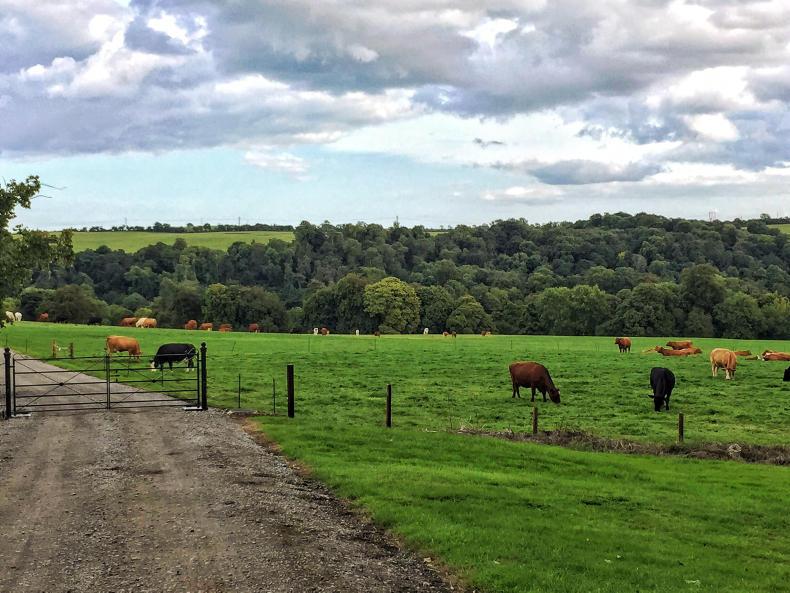
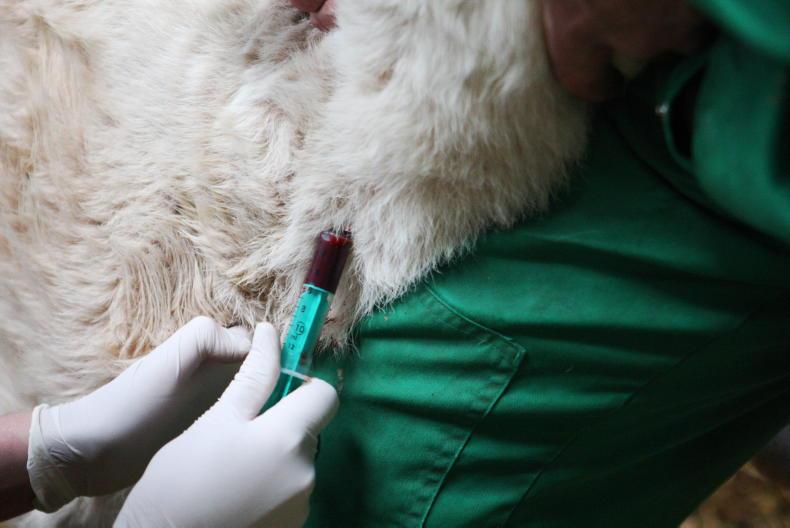
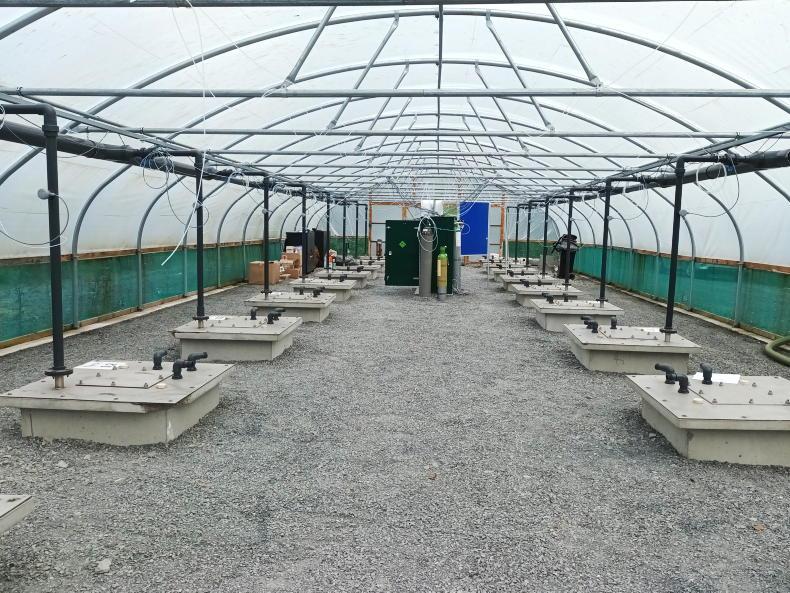
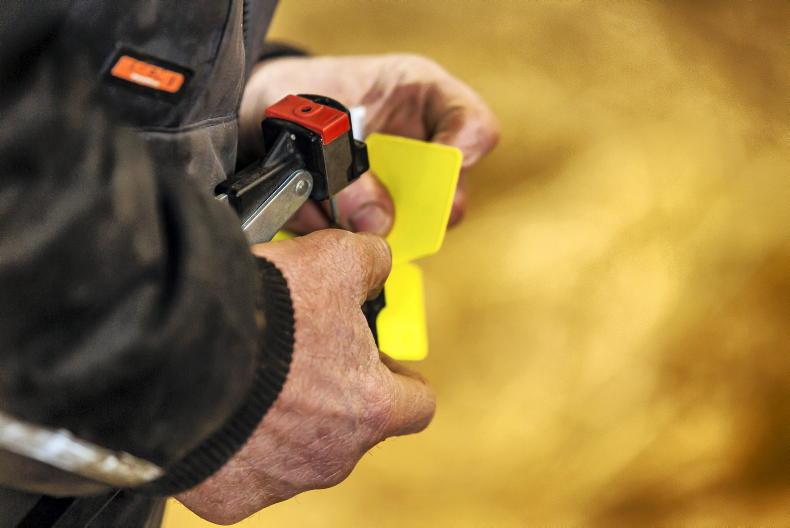
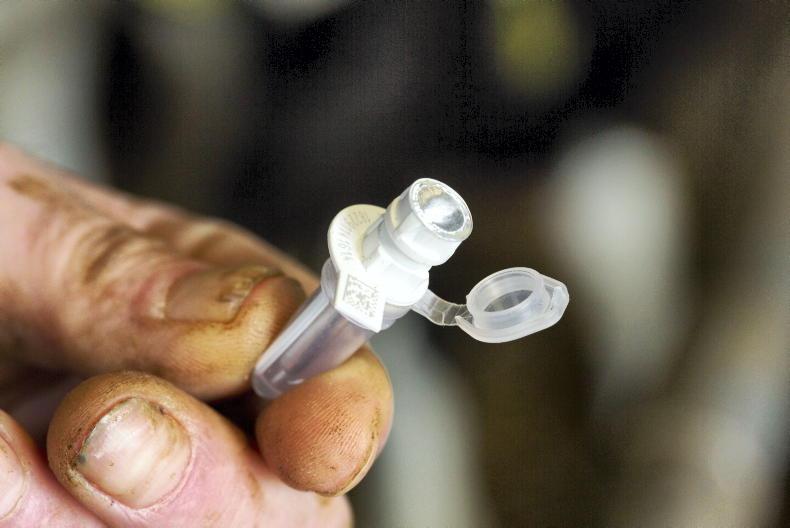
SHARING OPTIONS